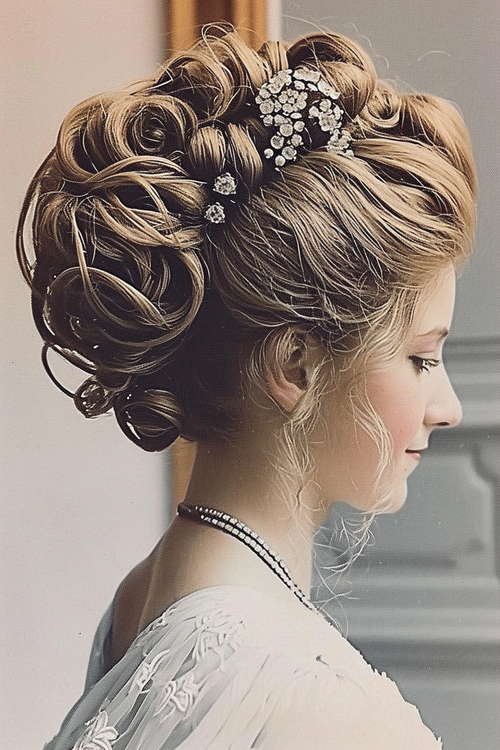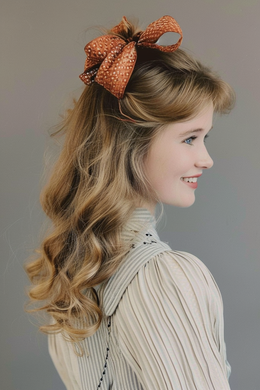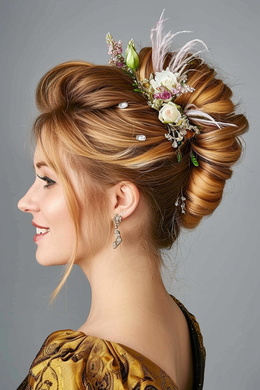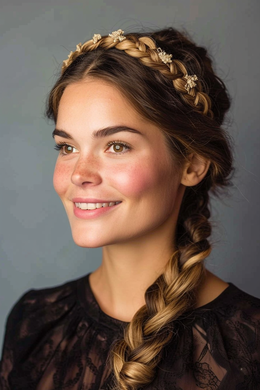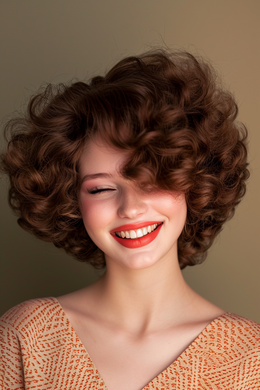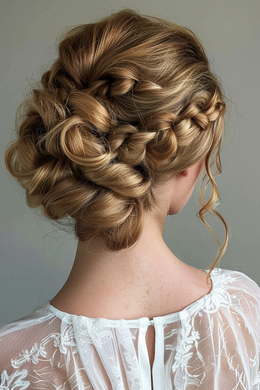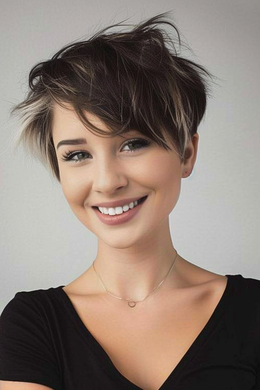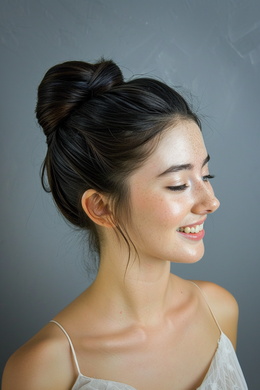18th Century Hairstyles: 59+ Elegant Looks for Women
Delve into an era of elegance and discover close-fitting adornments and wool-like curly splendor. Let the sophistication of these period hairstyles inspire you and awaken the stylist within you.
Table of content
- Sheep Wool-Curly Short Hairstyles (à la Mouton)
- High-Puffed Hair with Wire Frame and Hairpieces
- Fontange (towering curl hairstyle)
Sheep Wool-Curly Short Hairstyles (à la Mouton)
Imagine, in the 18th century, your hair would have been your fluffiest treasure – all in the style of 'à la Mouton.' These sheep wool-curly short hairstyles were the absolute eye-catcher and just so cute! Curls as soft and voluminous as sheep's wool – a hairstyle that radiated pure coziness. How was this achieved? Probably not only with the help of curling irons, but also with powder and pomade to give the curls extra hold and volume. You would have had the choice every day: show your natural color or add accents with some gray or even reddish powder. Sounds like a lot of work, but considering how fantastic those curls must have looked, it was definitely worth it!
High-Puffed Hair with Wire Frame and Hairpieces
Imagine transforming into an 18th-century lady—with high-puffed hair radiating royal glamour! Back then, it was all the rage: A wire frame as the foundation, artfully combined with one’s own hair and additional hairpieces. These hairpieces could be made of either real or synthetic hair, depending on availability and the desired grandeur. Teasing brought the volume, while the wire frame ensured spectacular height. It was a labor-intensive process, but for a grand appearance, it was worth taking the time. The beauties of the era knew how to capture all eyes with this extravagant hairstyle. With today’s hair care products and a bit of skill, you can revive this historic look—dare you?
Fontange (towering curl hairstyle)
Let yourself be transported to an era of grandeur and abundance, where the Fontange triumphed in the world of fashion. This towering collection of curls was more than just a hairstyle; it was an artistic masterpiece! Enriched with ribbons and ruffles, it reflected the high status of a lady at the French court. Just think of the patience and skill required to drape each curl perfectly onto the wire frame. Even today, we can learn from this testament to the craftsmanship of the past: a touch of dedication and an eye for detail can work wonders, even in modern hairstyles!
Hair Care and Hygiene in the Rococo Era
In the 18th century, the subject of hair care and hygiene was of particular interest, as the magnificent hairstyles required special attention. Although hair was not washed as frequently as it is today, this did not mean that hygiene was neglected. People relied primarily on thorough brushing with natural bristle brushes to remove dust and distribute the hair's natural oils. This kept the hair smooth and shiny. Sometimes the hair was washed with soap, followed by rinsing with fragrant vinegars to neutralize the hair and give it a fresh scent. Natural pomades were often used to add shine and prepare the hair for powdering. With attentive care and skillful styling, you could maintain your splendid hairstyle while still upholding a certain level of cleanliness.
Wigs as a Status Symbol and Craftsmanship
In the 18th century, wigs were much more than just a fashion accessory—they were considered a status symbol and a testament to true craftsmanship. The nobility and wealthy citizens had their wigs made by specialized wig makers, which underscored their social standing. Wearing wigs involved an entire ritual with dressing aids and special chambers for putting on and powdering them. If you wanted to emulate a lady of high birth, you would have needed to acquire a custom-made model and master the art of wig styling—a sign of true elegance and social prestige.
Powder and Pomade: Use and Significance
Powder and pomade played an essential role in the beauty care of the 18th century. Pomade, a mixture of fats and perfumes, was used for grooming and as a base for hair powder, giving the hair shine and shape. The powder itself, made from starch and fragrant essences, came not only in white, but also in gray, blonde, and occasionally even in colored variants. With powder, you could hide irregularities in the hair and achieve a fashionable, matte effect. Powdering was not just a cosmetic activity but also a social act, where one presented oneself and socialized. Therefore, treat your hair with care and emphasize your own beauty and social status with these refined means.


